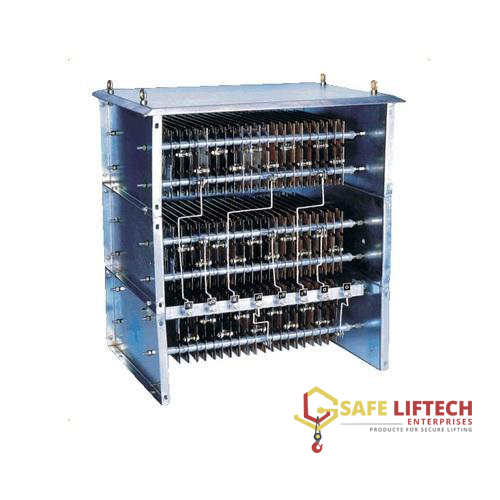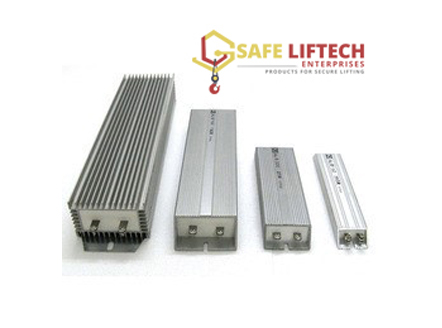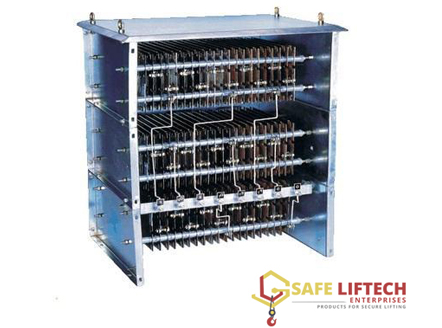
Dynamic Brake Resistor
Most DC motors will behave as generators as soon as they are removed from the power supply. This is due to their permanent magnets. The generated energy can be dissipated by connecting a power resistor as load. AC induction motors don’t have permanent magnets. In these motors, the rotating magnetic field in the stator induces a magnetic field. Braking resistors are used for applications where the motor speed exceeds the speed that is set by the variable frequency drive (VFD) or when fast deceleration is required. They can provide controlled braking at an increased torque. If the rotational velocity of the motor exceeds the synchronous velocity from the VFD, it will act as a generator. The surplus of energy will be fed into the VFD and increase the voltage on the DC bus. The larger the speed difference between the motor and the drive, the more energy will be fed back. It is important to correctly size a braking resistor. The lower the ohmic value of a resistor, the faster it can stop the motor and the more heat it generates. To compensate this, the resistor must be bigger or use a heat sink. The designer calculates the power rating of the resistor to stay under the temperature limits during braking. The resistance range is usually limited with a minimal value (to prevent over current) and a maximum value (for a low power dissipation capability).
Advantages of dynamic braking resistors over friction braking:
- Lower wear of components.
- Control motor voltage within safe levels.
- Faster braking of AC and DC motors.
- Less service required and higher reliability.
Contact Us
+91 8220152047




